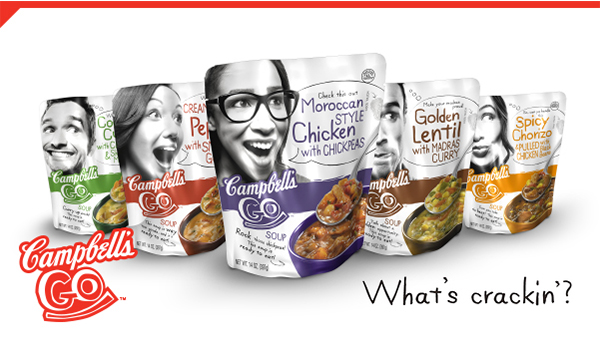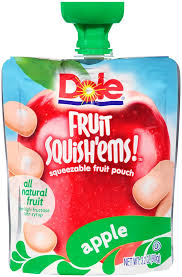
U.S. growth in Stand-up Pouches (SUP) has lagged behind Europe and other markets for years because their higher costs and poor stacking characteristics have made them less attractive compared to alternatives such as flat pouches and rigid packaging.
Stand-up pouches have traditionally been reserved for single-serve products in categories such as food & beverage.
But that’s changing as advances in barriers, laminations and fitments are expanding the number of applications for stand-up pouches.
They now have greater shelf stability and can be produced in a greater variety of sizes, shapes and closures. And by holding increased weight, they can now be used for contents that are greater than five pounds.
The broad array of stand-up pouch capabilities is especially relevant for consumer packaged goods (CPG) companies looking to differentiate their products in an increasingly crowded marketplace. When Campbell’s launched its new Campbell’s Go soups brand to target the Millennial generation, it replaced its iconic metal soup cans with stand-up pouches covered with vibrant images to attract their 18-to-34-year-old target segment.
The new Campbell’s Go brand is playing a key role in boosting the company’s soup sales. Dole, Ocean Spray and other food brands are also increasing their adoption of Stand-up pouches.

And the advantages of Stand-up pouches continue to add up, as some industry leaders note that they can be up to 95% lighter than rigid containers and reduce some product footprints by 10%.
These benefits help to trim transportation costs due to lighter shipments along with packaging material costs, and help brands increase the number of products that can be stocked on limited shelf space.
Based on our work in the packaging industry, we expect that the estimated $1-1.5B U.S. market for stand-up pouches will see high single-digit annual growth domestically during the next five years.
This diverse segment includes traditional (standard) Stand-up pouches with either fitments or substrates, as well as separate retort and aseptic offerings.
Segment growth opportunities here correlate with each category’s level of differentiation – from 78% CAGR for aseptic to 17% CAGR for standard stand-up pouches with fitments between 2013-2017 (see Figure 1).
Aseptic packaging presents compelling fundamentals; however filling speed limitations will likely place a ceiling on this market.
Demand for retorted food and pet food will keep the market growing for this shelf-stable packaging.
Additionally, stand-up pouches that include fitments (spouts, handles, etc.) and substrates (with growing usage of pouches for high-end and organic products) also have healthy growth trajectories.
The need for specialized stand-up pouch manufacturing equipment can create financial barriers to enter these new product markets.
As a result, this market includes a handful of large players that provide a suite of packaging options, along with mid-sized and smaller companies that primarily specialize in one or two capabilities.
However, given the demand characteristics for stand-up pouches, we believe that CPGs will need more suppliers with scale who can offer products in multiple segments.
Figure 1

Source : Strategic Packaging Trends
L.E.K. Consulting/Executive Insights Vol. XV, Issue 2
Written by Thilo Henkes and Carol Wingard
[ add comment ] ( 31 views ) | permalink |




 ( 3 / 2301 )
( 3 / 2301 )

 Calendar
Calendar